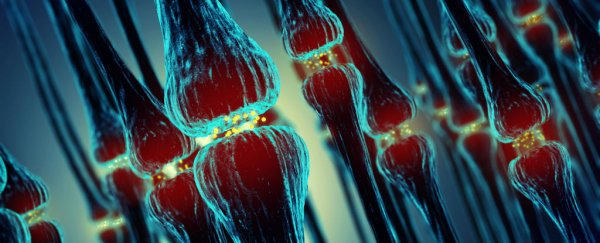Researchers in Australia have identified the mechanism by which synapses in the brain are destroyed in the early onset of Alzheimer's disease - long before the typical symptoms show up - and say the discovery could lead to faster diagnosis and a possible treatment.
The loss of synapses, which serve as the junction between two neurons in the brain, appears to be one of the first effects of Alzheimer's, and is associated with very mild cognitive impairment in patients. This occurs long before the actual neurons start dying off, so if we can figure out how to stop the progress of the disease at this very early stage, it could change everything.
"One of the first signs of Alzheimer's disease is the loss of synapses - the structures that connect neurons in the brain," says lead researcher Vladimir Sytnyk from the University of New South Wales (UNSW). "We have identified a new molecular mechanism which directly contributes to this synapse loss - a discovery we hope could eventually lead to earlier diagnosis of the disease and new treatments."
Sytnyk and his team studied donated brain tissue from people who had died with and without Alzheimer's, investigating in particle a brain protein called neural cell adhesion molecule 2 (NCAM2).
This molecule is of interest to neuroscientists because it belongs to a class of molecules that physically connects the membranes of synapses together and helps form a long-term bond between the synapses with the neurons.
Comparing the two groups of brain tissue, they found that the levels of synaptic NCAM2 in the hippocampus were significantly lower in people who had been diagnosed with Alzheimer's before they died. The hippocampus is where most of the damage from Alzheimer's occurs, and because it's the centre for the formation of our emotions and memory, a lapse in both have become hallmarks for the disease.
Publishing in Nature Communications, the researchers suggest that synaptic NCAM2 is being broken down by the beta-amyloid protein clumps that form in the brains of Alzheimer's patients.
Along with tau tangles - the neurofibrillary tangles in neurons caused by defective tau proteins - beta-amyloid protein clumps have been a key target for Alzheimer's research because they appear to be the two main drivers of the disease. Sytnyk and his team now hope to investigate NCAM2 loss as another possible avenue for treatment and diagnosis.
"Our research shows the loss of synapses is linked to the loss of NCAM2 as a result of the toxic effects of beta-amyloid," he said. "It opens up a new avenue for research on possible treatments that can prevent the destruction of NCAM2 in the brain."
With the amount of people affected by Alzheimer's expected to increase three-fold by 2050, we need to figure out how to beat this disease, and fast.
UNSW Science is a sponsor of ScienceAlert. Find out more about their research.
